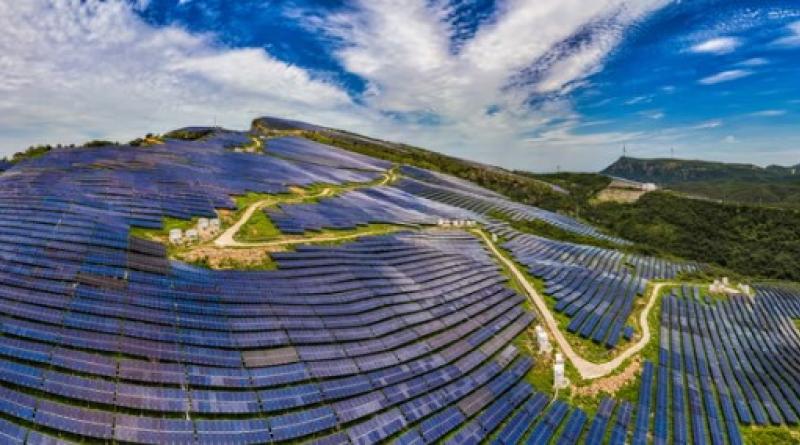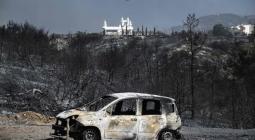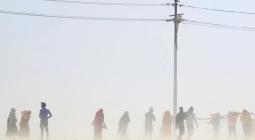Global heat is now ‘gobsmackingly bananas’, but there’s hope humanity can limit the climate damage

It’s hard to overstate just how exceptionally high global temperatures are now, but we have the technology to avert disaster
“Absolutely gobsmackingly bananas” is not standard scientific language, but these are not standard times, scientifically.
New data shows average global temperatures in September were not just the hottest ever recorded, but 0.5C above the previous record for the month. They were about 1.8C above temperatures in pre-industrial times, before humans started pumping vast amounts of heat-trapping greenhouse gases into the atmosphere.
The scientist and writer Zeke Hausfather is not prone to hyperbole but was quick to put this into context on social media, saying it was – in his “professional opinion as a climate scientist” – bananas. “It’s hard to overstate just how exceptionally high global temperatures are at the moment,” he said on Bluesky.
We’re seeing this in Australia. The Bureau of Meteorology reports that mean temperatures across day and night were even warmer when compared to what we’re used to: 2.43C above the long-term average Australians experienced between 1961 and 1990.
Maximum temperatures – the ones we really need to worry about as we head into summer, when we know heatwaves kill more people than bushfires or other extreme weather events – were 3.38C higher than the long-term average.
The hottest times of the day were particularly ridiculous in southern parts of the continent. In New South Wales, maximum temperatures across September were 5.07C warmer than what we would have expected late last century. Other states were not far behind.
While some set new records, it was not the hottest September ever across the continent – that prize is still held by 2013. But with forest undergrowth lush after three drenched La Niña years, there is plenty to worry about as temperatures rise in the weeks and months ahead.
Bushfires are already burning in three states, including more than 70 in NSW. One of those has destroyed homes on the NSW south coast. We’re not even halfway through spring.
The why of this has been well covered. The simple version is we’re in an El Niño event, which generally makes things hotter. It exacerbates the clear underlying trend of global heating caused by rising atmospheric greenhouse gas concentrations.
I suspect many people may be less across the reasons that we should be optimistic – however cautiously – that humans can get their act together and at least limit the damage from the climate crisis.
A report last week by the International Energy Agency – a Paris-based body that was once known for underplaying the rise of renewable energy – makes a case that a change is happening, at least for some technology.
It’s worth a closer look, not least because fossil fuel backers often claim the IEA says the world needs more of what they’re selling. This report – an updated roadmap for how we could keep the global goal of limiting heating to 1.5C within reach – clearly does not say this.
As Carbon Brief has pointed out, it makes three main points. The first is that some important clean energy tech – solar energy, electric cars and battery production – is now being rolled out at a record pace, in line with what is needed to reach global net zero emissions by 2050. Under the IEA’s pathway to zero, solar and EVs could provide one-third of the global emissions cuts needed by 2030.
This tells us that rapid change is possible. In the case of solar, it suggests that it can leapfrog fossil fuels as a primary energy source in the developing world, if influential countries tailor their support in that direction.
The second point is that, more than ever, we have the technology. Two years ago the IEA estimated that the clean technology needed to provide nearly half the emissions reductions across the planet by 2050 was not yet available. That gap has now dropped to 35% as new technology – batteries and electrolysers, for example – has come on. It is likely to continue to fall.
It means the main goal now must be rapid acceleration before 2030. That’s easier said than done, but it’s possible using proven and in most cases affordable strategies. The agency says global renewable energy capacity needs to triple, the pace of energy efficiency improvements needs to double, EVs and heat pump sales need to rise sharply, and methane emissions from fossil fuels – including leaks from coal and gas mines – need to be cut by 75% in that timeframe.
For the clean tech to have the impact that’s required, the approval and development of new fossil fuels needs to stop. This is the third point. It’s consistent with what IEA chief, Fatih Birol, said when the first roadmap was released two years ago.
The IEA now says a concerted expansion of renewable energy could cut global demand for fossil fuels by 25% by 2030 and 80% by 2050. As a result, the world does not need new or extended coalmines, or coal plants that do not capture and store their emissions (and no power stations are meaningfully doing this).
Crucially, in an Australian context, it also says there is no justification for approving new oil and gas developments. It argues that continued investment in some oil and gas projects that either already exist or have been approved is not inconsistent with the global net zero goal, but that the transition to clean energy must be carefully sequenced to ensure there is enough energy to avoid price spikes, but not so much that there is a glut of supply.
If properly handled, the IEA expects this would translate to a significant decline in the global gas supply – a 20% drop by 2030 and a nearly 50% cut by 2035.
The implications of this are pretty clear, if not politically popular.
New fossil fuel developments should not be approved without factoring in global climate goals. And governments will need to take a more interventionist role and make science-based calls about which energy projects should go ahead.
Given the evidence, anything less might be described as bananas.
-
Adam Morton is Guardian Australia’s climate and environment editor
Photograph: VCG/Getty Images - As global heat records are smashed, there is hope the damage can be limited as clean energy growth puts 2050 zero emissions target on track. Solar farm in China’s Henan province.





